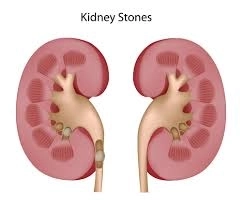
Bile Duct Stones: Comprehensive Diagnosis and Treatment Supervised by: Dr. Mohamed Bakhit – Consultant of Liver and Pancreatic Surgery Dr. Ibrahim Fathy – Lecturer and Consultant of Liver and Biliary Tract Surgery Dr. Mohamed Mourad – Lecturer of Gastr
Published on: 2025-06-14 | Written by: Hope cancer center
What Are Bile Duct Stones?
Bile duct stones (choledocholithiasis) are solid deposits formed from crystallized substances—mainly cholesterol or bile salts—inside the bile ducts. These stones may cause blockages or serious infections in the digestive system.
Causes of Bile Duct Stones:
-
High cholesterol concentration in bile
-
Poor gallbladder emptying
-
Chronic inflammation of the liver or digestive system
-
Obesity or rapid weight loss
-
Chronic blood disorders like sickle cell anemia
Symptoms of Bile Duct Stones:
-
Severe pain in the upper right abdomen
-
Yellowing of the skin and eyes (jaundice)
-
Fever and chills (in case of infection)
-
Nausea or vomiting
-
Dark urine and pale-colored stools
How Are Bile Duct Stones Diagnosed?
Dr. Mohamed Mourad explains that diagnosis depends on a combination of clinical evaluation and advanced imaging techniques, including:
-
Ultrasound: to detect stones in the gallbladder or bile ducts
-
Magnetic Resonance Cholangiopancreatography (MRCP): for detailed imaging of the biliary tract
-
Endoscopic Retrograde Cholangiopancreatography (ERCP): used for both diagnosis and treatment
Treatment Options for Bile Duct Stones:
Dr. Ibrahim Fathy emphasizes that treatment depends on the size and location of the stones and the patient’s overall health. Key options include:
1. Medication:
In minor cases, certain medications may dissolve stones, though this method is not always effective.
2. Endoscopic Removal (ERCP):
This minimally invasive procedure removes bile duct stones without surgery and is the first-line treatment for obstructions.
3. Surgery:
Dr. Mohamed Bakhit notes that surgery may be necessary in complicated cases or when chronic inflammation is present. Surgical options include gallbladder removal or direct bile duct exploration.
Can Bile Duct Stones Be Prevented?
Yes. Preventive measures include:
-
Maintaining a healthy weight
-
Eating a balanced, low-fat diet
-
Regular physical activity
-
Avoiding prolonged fasting
-
Treating liver or digestive inflammation early

